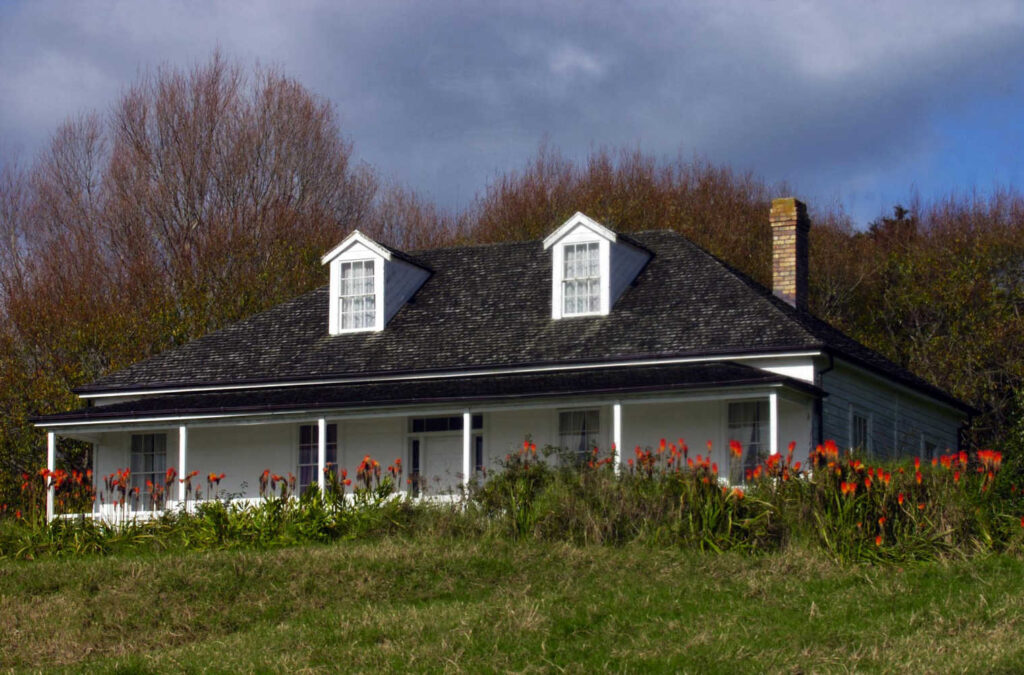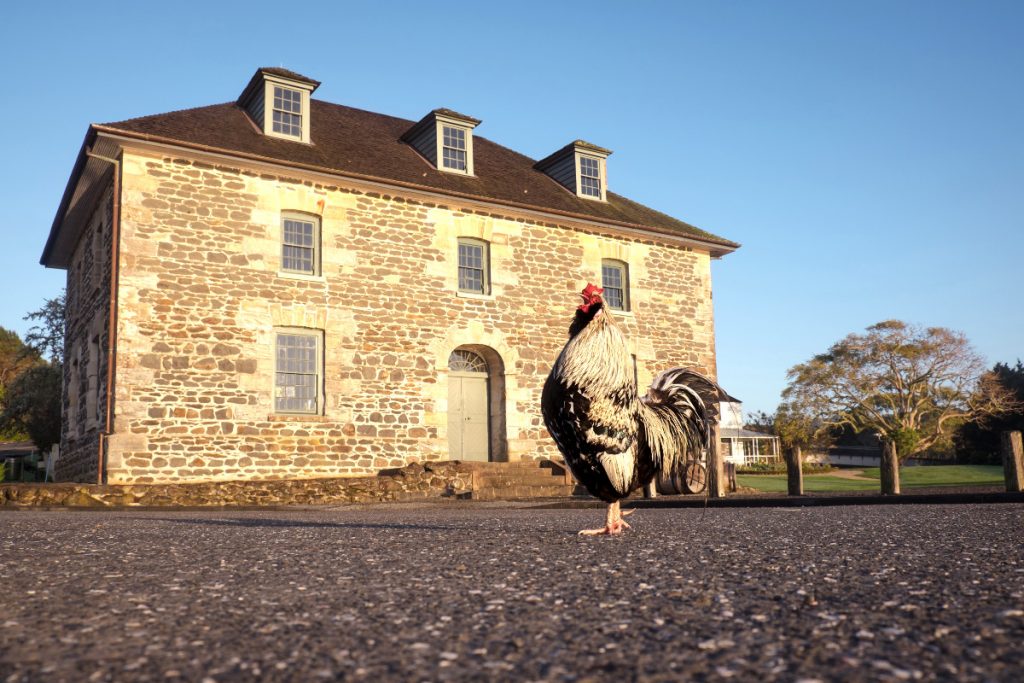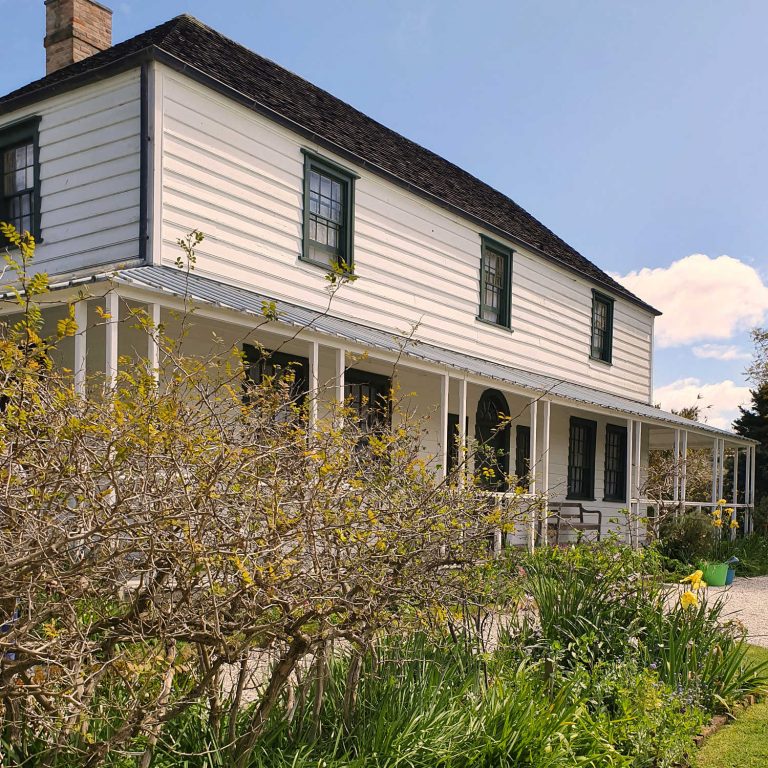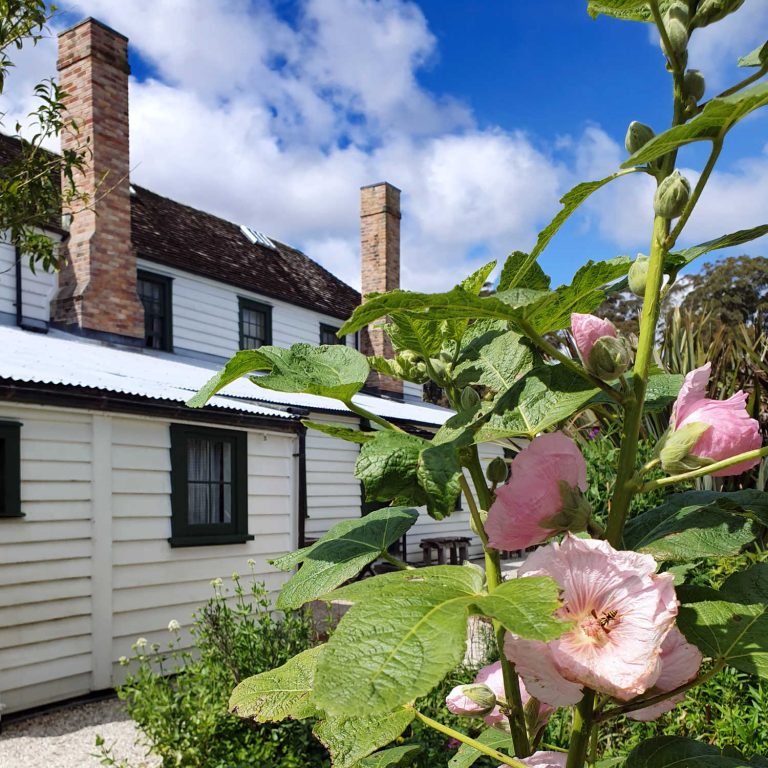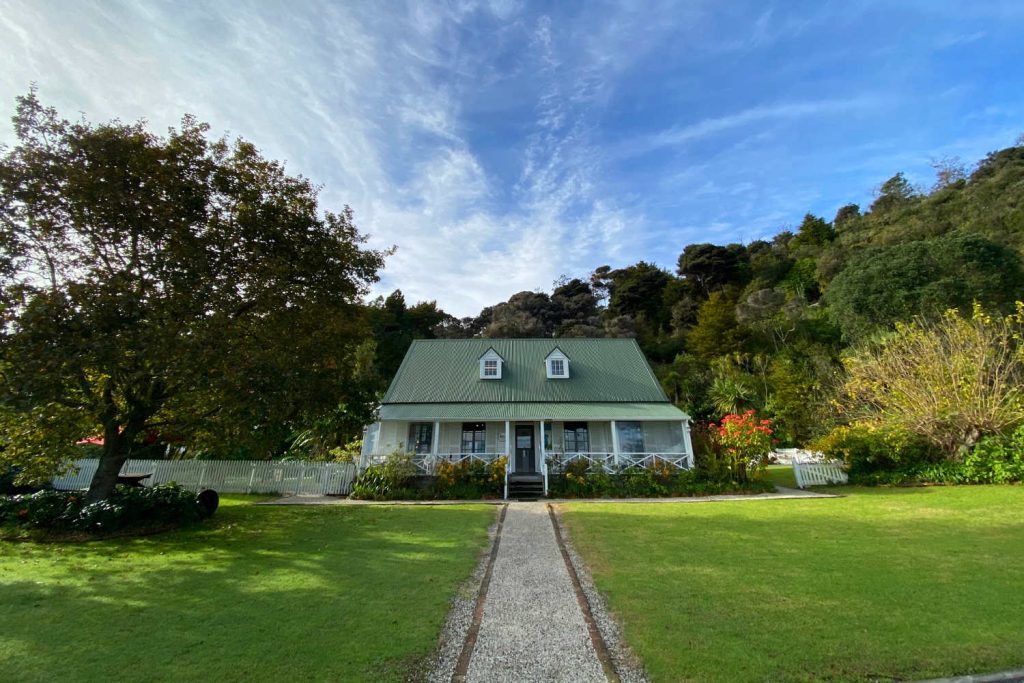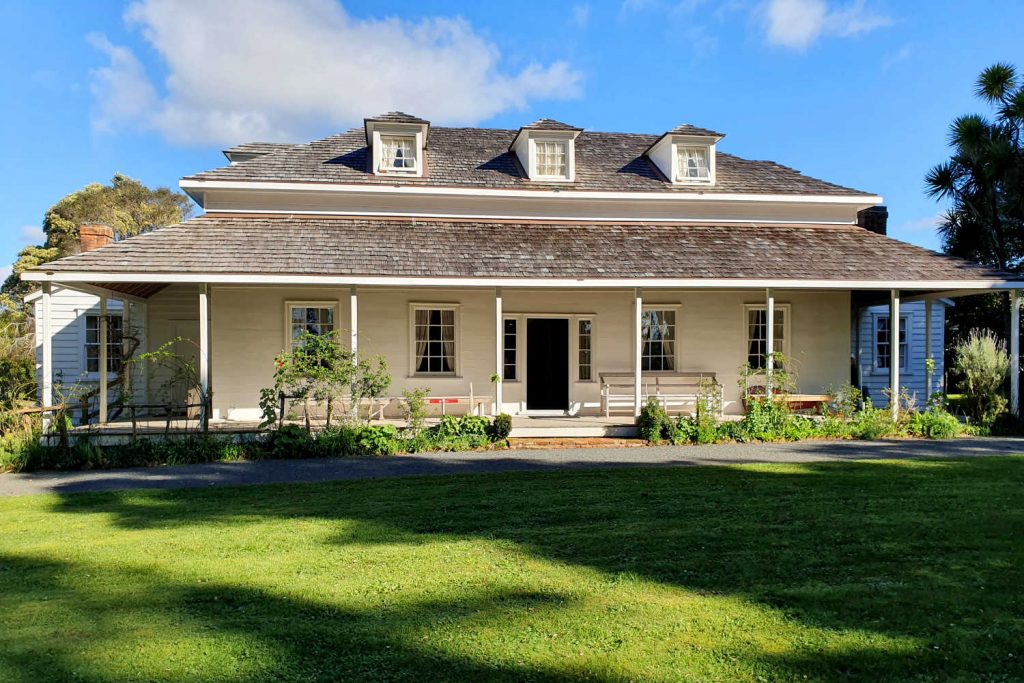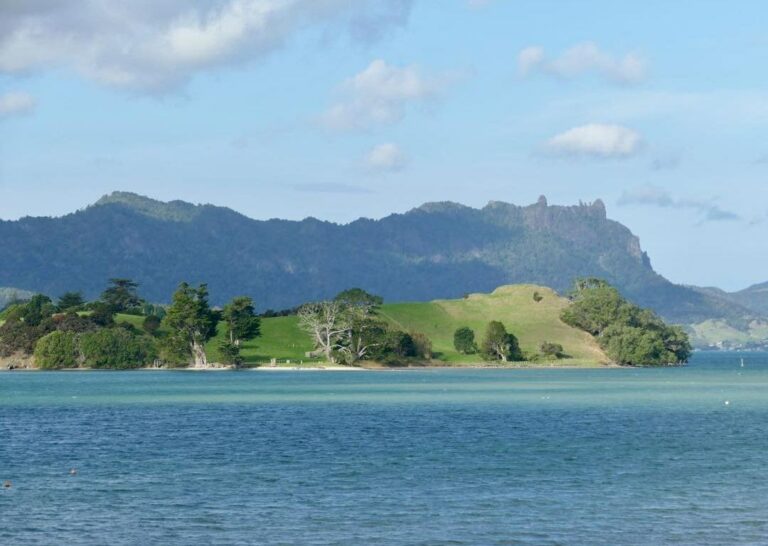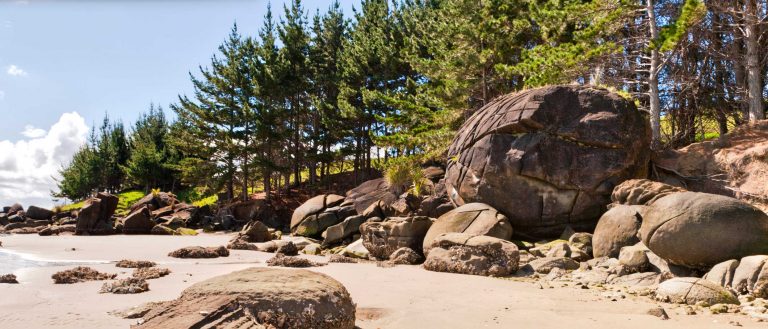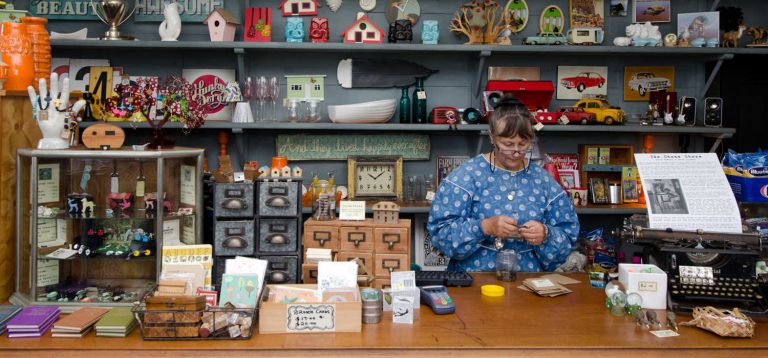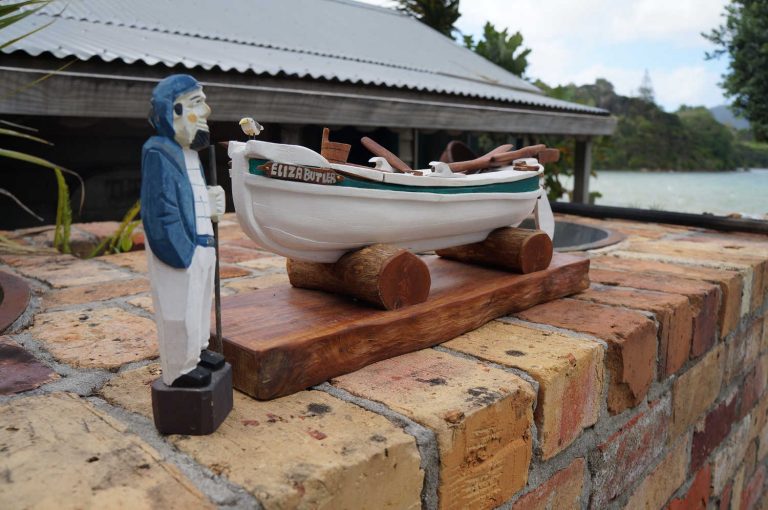North Island mission stations, 1845 – Missions and missionaries explains how the three major church denominations battled for converts. By 1845 three major churches – Anglican, Wesleyan and Catholic had religious footholds in New Zealand.
A mission station is a location for religious Christian activity, schools, church work and supporting the health of local populations. In the early nineteenth century Aotearoa experienced an influx of European religious values and a differing world view. The mission stations and their records are a reflection of these turbulent times and the impact change wrought on New Zealand. The story of missionary settlement is captured in a heritage garden, agricultural equipment, a printing press and a multitude of documents and lithographs.
-
Mangungu Mission Station Māngungu
It was established on the shore of the spectacular Hokianga Harbour in 1828 as a Wesleyan Mission station. It was built in 1838-1839 for the Reverend Nathaniel Turner, at the invitation of the emerging Māori leader Patuone.
A favourite building due to its simplicity and ease of access on the cycle trail it is often overlooked by heritage fans. The biggest signing of the Treaty of Waitangi took place here, a significance acknowledging the role Hokianga plays in the history of Maori settlement of New Zealand. Naturally Mangungu witnessed another first, a government lead feast or hui for all concerned. According to local records the assent for the Treaty took place before a crowd of up to 3,000 people. The event is remembered each year on 12 February – come along and join in the festivities. Honey bees were introduced at Māngungu, providing a major contribution to the success of pastoral farming in New Zealand. To visit check out for details Māngungu Mission.
-
Kerikeri Stone Store Missionary Society warehouse
The Stone Store located in Kerikeri was built in 1832. The Georgian style trading post continues to operate as a store for visitors. New Zealand’s oldest continuously operated retail shop. The shop has replica goods similar to household items used in the early 19th century, alongside one of a kind New Zealand merchandise. Museum displays can be viewed upstairs. To visit check out for details Kerikeri Mission Station.
-
Kerikeri Kemp House Majestic
It describes Kemp House Kerikeri, completed in 1821–22 by missionary carpenters and Māori sawyers, Kemp House is a family home of simple, Georgian design.There are guided tours elaborating the significant events Kemp House has witnessed from hostility to peace and everything in between. The setting is glorious and situated close to the traditional waterway transport links of the area. To visit check out for details Kerikeri Mission Station.
-
Kerikeri Mission Station
In 1819 astute local chiefs invited European missionaries to settle down. Under the protection of Maori tribal leaders there were opportunities for the exchange of trade and technology of Europe. Kerikeri Mission Station was established in a climate of tribal warfare and ever-increasing visits from foreign ships. Today the Mission Station has commanding views over the landscape. Guides narrate stories of Maori leaders negotiating their way through a rapidly changing environment, drunken sailors, and missionaries keen to convert people with their own cultural beliefs. Younger visitors will love the hands-on Children’s Chores Tour, held at 11am daily in summer. To visit check out for more information Kerikeri Mission Station.
-
KeriKeri Mission Gardens
The oldest continuously cultivated European garden in New Zealand.
The layers of the past are evident with millstones from 1820’s to grind wheat. There is a 100 year old Mulberry tree, a gorse hedge still thriving from the original cuttings and an original pear tree now propped on stilts to ensure its well being. Ngapuhi chief Hongi Hika, from his Pa Kororipo, across the water, from the new site came to rely heavily on the gardens as a vital source of food when the missionaries refused to trade in guns with Hongi for pigs and potatoes. There is a cafe that continues to use ingredients sourced from the gardens for its appetising array of lunch dishes. Open 24/7.
Location: Follow signs behind Kemp House and cafe.
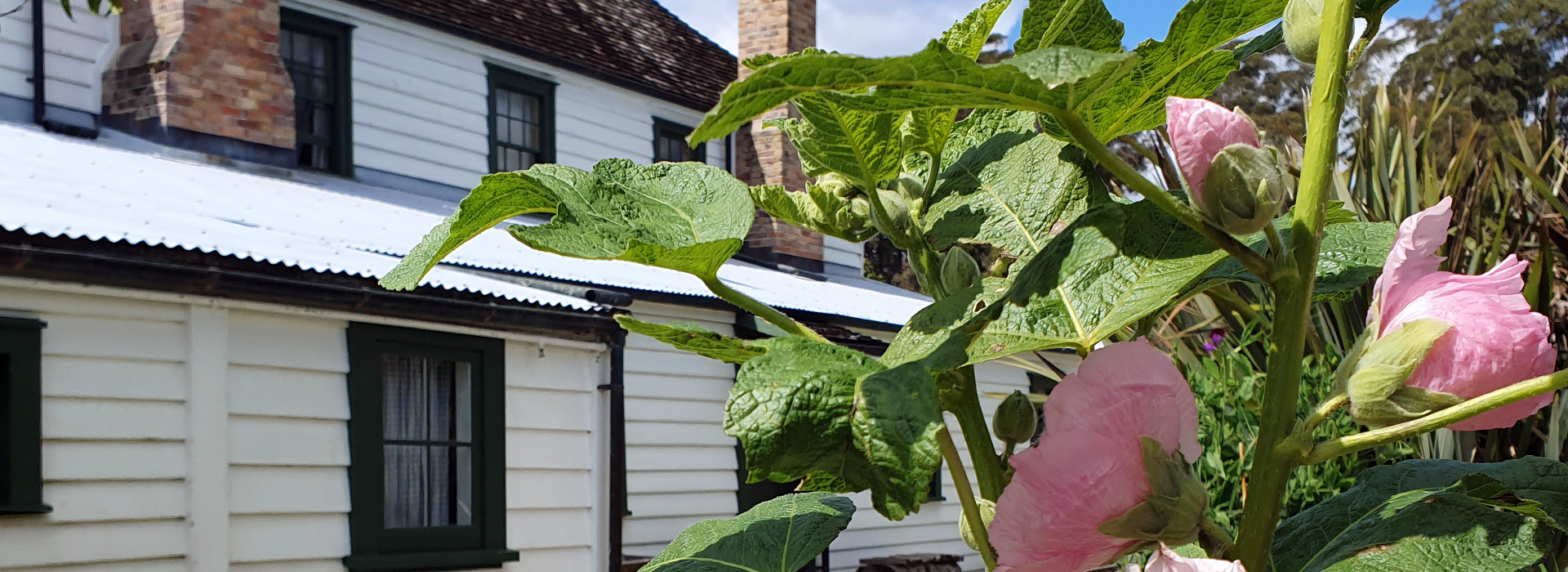
-
Pompallier House
Russell Catholic bastion and one of the earliest places where the bible was translated into Maori. A well known printing press and publishing mission supporting Catholic missions throughout New Zealand. Pompallier House is located on the shoreline of Russell Harbour gives it prime access to the waterways and the goings on in the nineteenth century ‘hellhole of the Pacific.’ Today visitors have an opportunity to observe a heritage press in action and lunch at the adjoining cafe. To visit check out for details, Pompallier Mission and Printery.
-
Te Waimate Mission
It is New Zealand’s second oldest building, Te Waimate Mission, preserves missionary, farming and architectural history. The building and its artefacts narrate early encounters between Māori and Europeans. The quiet rural scene is testament to the once extensive farm and the belief by the missionaries in the value of hard work and Christian practices. With its ethnographic displays and extensive agricultural collections you obtain a vivid picture of life at Te Waimate Mission. The mission was established by the London-based Church Missionary Society. to instruct Māori in European farming techniques while promoting the Christian way of life. It is reached from Kerikeri via one of New Zealand’s first roads. The gardens and house are serene and make a great spot to relax and ponder about the importance of the site. To visit check out for more information, Te Waimate Mission.
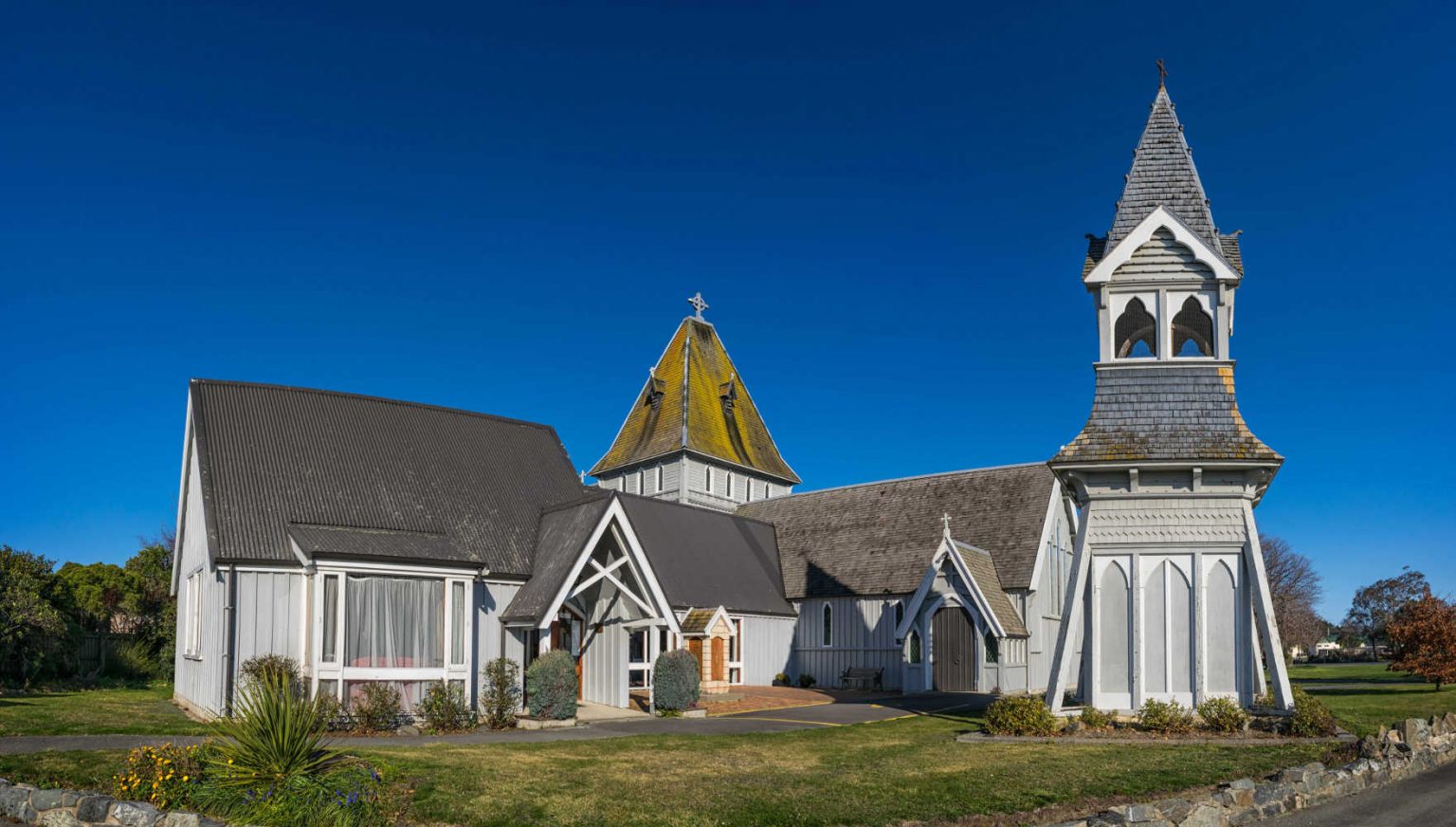
-
Te Waimate North Church
The church of St. John the Baptist was the fourth church to be built in New Zealand and the first to be established in the interior.
The church monitored and supported the schooling of children. In 1878 the present fence round the churchyard made from Totara was put up. It is remarkable to stand next to the solid fence thinking of its history. It is a Gothic style church building.
Location: Adjacent to Te Waimate Mission Station
-
Paihia Mission Station
The Paihia Mission was built in 1923 at the invitation of Chief Te Koki. There was originally a large four bedroomed native timber house on site.
The site is significant for cricket fans as Missionary Leader Henry Wiliams dusted off his cricket equipment. He rewarded his pupils with an introduction to the game of cricket on the foreshore of Horotutu. Williams documented, in his diary, local Maori ‘very expert, good bowlers’. Williams, who had imported the cricket equipment, had a bowl himself, conceding a run to five-year-old Edwin Fairburn. The following day ‘the boys recommenced their regular work’, building fences and preparing ground for cultivation. There was no summer break for an institution largely reliant on its own resources. The first documented game of cricket was 20 December 1832. The naturalist Charles Darwin watched the next cricket match on record, at Waimate North mission station three years later. Once again, both Māori and Pākehā boys took part.
-
Rangihoua Heritage Park
Rangihoua Bay of Islands, 1816 is the site of the first mission school opened by Church Missionary Society (Anglican) station in Rangihoua, Bay of Islands.
The first schoolmaster, Thomas Kendall, was taught his first Māori by Tuai, of Bay of Islands hapū, Ngāre Raumati. Tuai’s teachings in Sydney 1813, led to Kendall publishing the first book to use the Māori language in 1815; he used this book in his school. On 24 December 1814, Tuai, Korokoro and about 200 Ngāre Raumati warriors helped welcome the settlers, including the Kendall family, to their new home at Rangihoua under the protection of local chief Ruatara. 18 months later the school opened with 33 students and peaked at 70 eight months later. Attendance varied with the supply of food, and in late 1818 it closed.
Getting to Mission Stations in Northland
TRAVEL PACK INFORMATION
- Missionaries a summary of the critical years of European and Maori interaction in the early nineteenth century.
Paihia Mission Station remains:
- Old Paihia unearthed check the Stuff online article for a description of the archeological dig. Leigh Johnson and Elisabeth Callaghan of Northern Archaelogical Research are hoping to establish the floor plan for the historic ruins. The building predates Kerikeri’s Stone Store… “There were 50-odd Maori here. It wasn’t just Europeans. It was the first place where the two sides of New Zealand came together and lived together. This is really where the biculturalism of New Zealand came from,” Mr Thomson says. Williams House & Gardens. The historic buildings and gardens of Paihia’s First Mission Station include a restored stone store, and now house a community library and a community secondhand bookshop. Free public wi-fi is available here too. The mission station was Anglician in practice.
BEST BITS TRAVEL GUIDE


